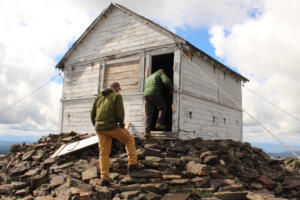In 1992, a single male sockeye salmon managed to swim 900 miles from the mouth of the Columbia River to Redfish Lake in Idaho’s Sawtooth Mountains, the end of his migratory journey. Biologists dubbed the sole survivor, “Lonesome Larry.”
By 2010, the Northwest Power and Conservation Council happily reported record-setting runs for sockeye — nearly 387,000 had climbed the fish ladders at Bonneville Dam. The numbers, which fluctuate annually, stand at 186,000 this year.
The resurgence of the sockeye is not unique.
As of Oct. 9, more than one million Chinook entered the mouth of the Columbia River, crushing the old record of 400,000. As of last week, they were coming in at 500-800 per day.
This is the largest return of fall Chinook since fish counting began at Bonneville Dam back in 1939. Even sweeter, four of the five highest returns of fall Chinook have occurred in the past decade.
With all of this good news, what could possibly be wrong? Heck of a good question, yet activists continue to pursue a single goal: removal of the four lower Snake River dams. They insist that it’s the only way to save the salmon.

